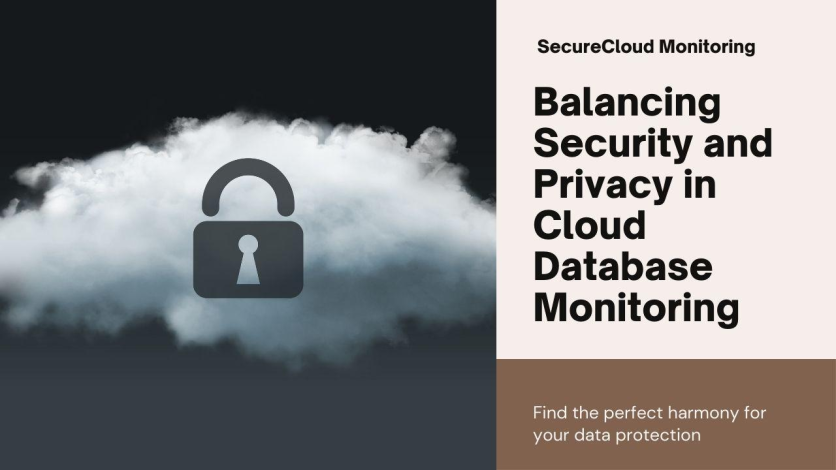
In the digital age, cloud computing has fundamentally transformed how businesses manage and process data. As the adoption of cloud services accelerates, ensuring robust security while protecting individual privacy has become a paramount concern. Venkatakrishna Valleru's article explores the innovative solutions and technologies designed to strike a balance between these often competing demands, with a focus on security and privacy in cloud database activity monitoring.
The Dual Challenge: Security and Privacy
Database Activity Monitoring (DAM) in cloud environments is essential for maintaining data integrity and security. DAM solutions monitor and analyze database behavior in real-time, providing alerts for potential security breaches. However, this process often involves accessing and scrutinizing sensitive information, raising significant privacy concerns.
Cloud environments, with their multi-tenancy and distributed architectures, complicate privacy protection. Ensuring only authorized personnel access sensitive data is challenging when it's spread across multiple locations and managed by third-party providers.
Innovative Security Solutions for Privacy Protection
Below are some critical security solutions that aid in protecting privacy.
Privacy-Preserving Technologies: Encryption is fundamental in protecting data from unauthorized access and ensuring security at rest, in transit, and during processing. Companies leveraging extensive encryption technologies can significantly reduce the cost of data breaches. In such cases, advanced techniques like homomorphic encryption allow computations on encrypted data without decryption, providing robust privacy during data processing.
Tokenization and anonymization enhance privacy by replacing sensitive data with unique tokens or removing identifiers, enabling secure data analysis. MIT's differentially private SQL database exemplifies this approach, allowing researchers to work with sensitive data without revealing identities. These techniques maintain privacy while enabling meaningful data insights and analysis in research and other sensitive applications.
Access Control Mechanisms: Effective access control systems are critical in managing who can view sensitive data in cloud environments. Role-Based Access Control (RBAC) and Attribute-Based Access Control (ABAC) are widely used methods. RBAC simplifies user permission management by allowing access based on the user's role within the organization.
ABAC, on the other hand, provides more granular control by considering user, resource, and contextual attributes. Research by NIST indicates that ABAC can simplify access control policies by up to 80% compared to RBAC. Implementing these mechanisms in dynamic cloud settings requires adaptability to ensure continuous compliance with privacy regulations.
Auditing and Monitoring Strategies: Advanced auditing and monitoring strategies are essential for detecting and preventing data breaches. Machine learning and artificial intelligence play pivotal roles in these strategies by analyzing behavioral patterns to identify potential security threats. Studies from the University of California, Berkeley, show that machine learning can promptly detect up to 85% of insider threats. Some analytics tools leverage machine learning to monitor user activities and detect anomalies indicative of potential breaches.
Compliance Management Tools: Navigating the complex legal and regulatory requirements requires robust compliance management tools. These tools assist organizations in adhering to regulations like GDPR and HIPAA by automating tasks such as privacy impact assessments, data mapping, and audit logging. According to a survey conducted in 2023, 65% of the global population will have modern privacy laws protecting their data, up from 10% in 2020. A privacy management platform exemplifies this, reducing compliance-related tasks by up to 50% and ensuring organizations can quickly adapt to new regulations.
Future Directions and Emerging Technologies to Balance Security and Privacy
With increasing privacy concerns, organizations are integrating Privacy by Design (PbD) principles into their cloud-based database activity monitoring systems. PbD incorporates privacy and security considerations throughout the lifecycle of systems and processes. Additionally, AI-driven advancements in anomaly detection are crucial for enhancing privacy and security protection in cloud-based database monitoring.
Traditional rule-based methods fall short with growing data volumes. Advanced AI techniques, such as Long Short-Term Memory (LSTM) networks and Autoencoders, offer accurate and flexible detection, identifying subtle patterns indicating privacy and security violations. Research shows deep learning models can identify insider threats with up to 95% accuracy.
Venkatakrishna Valleru says emerging technologies like homomorphic encryption and blockchain enhance privacy and security in cloud environments. Homomorphic encryption allows secure data processing, while blockchain provides immutable access logs for tamper-proof records, balancing robust security measures with privacy considerations.
To conclude, balancing security and privacy in cloud database activity monitoring is essential in the digital age. Organizations can protect sensitive data while ensuring regulatory compliance by leveraging innovative technologies such as encryption, tokenization, and advanced AI-driven anomaly detection. Integrating Privacy by Design principles and emerging technologies like homomorphic encryption and blockchain further enhances this balance. As cloud computing evolves, these strategies will be crucial in safeguarding both data security and privacy, enabling organizations to navigate the complex digital landscape effectively.
ⓒ 2025 TECHTIMES.com All rights reserved. Do not reproduce without permission.




